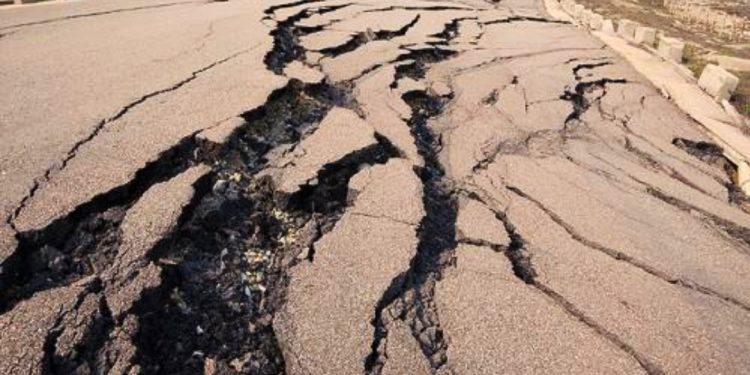By John Ikani
The Obafemi Awolowo University, Ile-Ife, says an earth tremor of low magnitude occurred in Southwest Nigeria around 1100 GMT on Saturday.
A report signed by Adekunle Abraham Adepelumi, a professor of geophysics at the institution, revealed that the estimated epicentral distance of the tremor was between 108 and 113 km away from the measuring station at the Obafemi Awolowo University, Ile-Ife, Nigeria.
The report further revealed that the epicentre was somewhere along the NW-SE direction of Ile-Ife, Osun State, Nigeria roughly placed close to Omu-Aran in North-Central Kwara State.
“A normal fault mechanism along the Ifewara-Zungeru Transcurrent Fault system due to intra-plate seismicity was deduced. This suggests that this fault system is still active,” he said.
What you should know
A tremor is an earthquake of low or moderate intensity.
Epicentre is a point on the surface of the Earth that is directly above the underground point (called the focus) where fault rupture commences, producing an earthquake.
A seismic zone is used to describe an area where earthquakes tend to focus.
A fault zone is a fracture or zone of fractures between two blocks of rock. Faults allow the blocks to move relative to each other. This movement may occur rapidly, in the form of an earthquake
Although Nigeria is not located within the major seismic zones of the world; over the years, several minor earthquakes have been experienced in some parts of the country.
The first recorded Earth tremor in Nigeria occurred in Warri in 1933 while between 1933 and 2000 Nigeria experienced 15 Earth tremors.
The possible mechanism for the Nigerian Earth tremors has been attributed to Earth movements associated with NE-SW trending Ifewara-Zungeru fault zone extending from the Atlantic Ocean into the country.




































